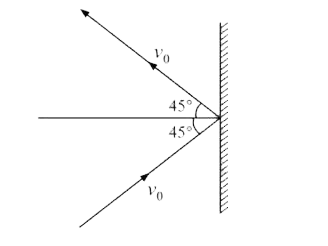V0/√2
V20/√2
V20/2
√2V20
2V20
The correct Answer is:A
Given
Input Vrms=V0√2
In full wave rectifier the whole cycle is rectified wil be same as output

So the output voltage will be V0√2
Similar Questions
Knowledge Check
The electric field acts positive x-axis. A charged particle of charge q and mass m is released from origin and moves with velocity →v=v0ˆj under the action of electric field and magnetic field, →B=B0ˆi. The velocity of particle becomes 2v0 after time √3mv0√2qE0. find the electric field:
A√2√3E0ˆiB√3√2E0ˆiC(√3)E0ˆiD(√2)E0ˆiA ball is thrown from a point with a speed V0,at an angle of projection θ.From the same point and at the same instance a person starts running with a constant speed V0√2 to catch the ball will the person be able to catch the ball? If yes, what should be the angle of projection
Ayes, 60∘Byes, 30∘CNoDyes, 45∘A magnetic field →B=−B0ˆi exists within a sphere of radius R=v0T√3 where T is the time period of one revolution of a charged particle starting its motion from origin and moving with a velocity →v0=v02√3ˆi−v02ˆj. Find the number of turns that the particle will take to come out of the magnetic field.
A5B1C4D2
The horizontal range and the maximum height of a projectile are equal.If the speed of projection is v0,then the speed at the highest point is 2v0√p The value of "p" is
View Solution[" The horizontal range and the maximum "],[" height of a projectile are equal.If the speed "],[" of projection is "v_(0)" ,then the speed at the "],[" highest point is "(2v_(0))/(sqrt(p))" .The value of "p" is "],[" Answer: "]
View SolutionA magnetic field →B=−B0ˆi exists within a sphere of radius R=v0T√3 where T is the time period of one revolution of a charged particle starting its motion form origin and moving with a velocity vce(v)0=v02√3ˆi−v02ˆj. Find the number of turns that the particle will take to come out of the magnetic field.
View SolutionA magnetic field →B=−B0ˆi exists within a sphere of radius R=v0T√3 where T is the time period of one revolution of a charged particle starting its motion form origin and moving with a velocity vce(v)0=v02√3ˆi−v02ˆj. Find the number of turns that the particle will take to come out of the magnetic field.
View Solutionve=√2GMR
View Solution

